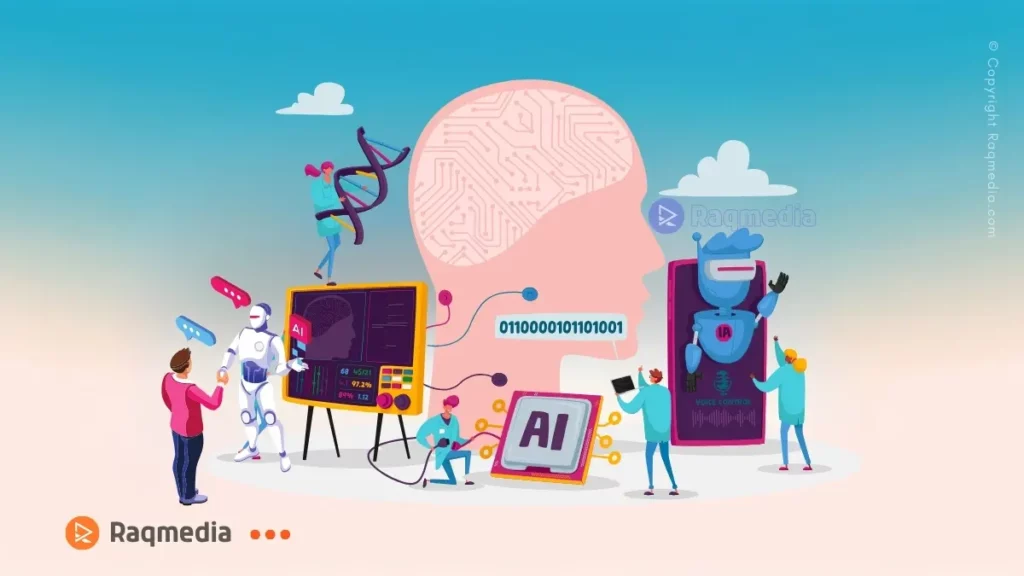In the realm of artificial intelligence, where once fantastical notions stirred the imaginations of sci-fi enthusiasts and tech visionaries alike, a fascinating evolution has unfolded. From the pages of speculative fiction to the laboratories of cutting-edge research institutions, AI has transitioned from fantasy to reality with a swiftness that mirrors its own machine-like efficiency. As we embark on a journey of AI evolution, one thing becomes clear: regulations have emerged as not just an afterthought but a crucial compass that guides this revolutionary technology towards responsible development and ethical use.
Table of Contents
- 1 The Journey of AI Evolution: From Sci-Fi Dreams to Real-World Regulations
- 2 The Emergence of AI in Science Fiction
- 3 Milestones in AI Development
- 4 AI Ethical Implications and Regulatory Challenges
- 5 The Call for Responsible AI Innovation
- 6 Navigating Towards a Balanced Future
- 7 Navigating the AI Ethical Horizon: Charting AI's Path Forward
- 8 FAQs About The Journey of AI Evolution:
- 8.1 Q1: What are some key milestones in artificial intelligence development?**
- 8.2 Q2: What are some common ethical concerns surrounding AI deployment?**
- 8.3 Q3: How can regulations influence the responsible development of AI technology?
- 8.4 Q4: Why is interdisciplinary collaboration crucial for navigating AI's path forward responsibly?
- 8.5 Q5: What role does transparency play in building trust within the AI industry?
The Journey of AI Evolution: From Sci-Fi Dreams to Real-World Regulations
The trajectory of AI's transformation from mere sci-fi trope to real-world powerhouse is a wondrous narrative filled with twists and turns that captivate both the technologically savvy and curious minds alike. It's a tale that speaks volumes about human ingenuity and our insatiable quest to push boundaries beyond the realm of what was once deemed impossible.
Along this riveting voyage, regulations stand as stalwart guardians, ensuring that the ethical dimensions of AI advancement are upheld even amidst rapid progress. In this symbiotic dance between innovation and oversight lies a delicate balance that will shape the future landscape of artificial intelligence in ways both profound and far-reaching.

As we delve deeper into this dynamic interplay between dreamlike aspirations and concrete governance, join us on an exhilarating expedition through time and technology. Together, let us chart the course from sci-fi dreams to real-world regulations – exploring not only how far we've come but also where this evolutionary odyssey might lead us next. Set sail with us as we uncover hidden truths, unearth fresh perspectives, and embrace the ever-unfolding saga of AI's transformative journey through realms both imagined and tangible.
The Emergence of AI in Science Fiction
Embarking on the journey tracing artificial intelligence's evolution inevitably leads us back to its humble beginnings entrenched in science fiction wonders. From Isaac Asimov's groundbreaking “I, Robot” tales to Stanley Kubrick‘s enigmatic HAL 9000 from “2001: A Space Odyssey,” AI has long been a dazzling fixture in the imaginative worlds of literature and film. These early portrayals sparked fascination and fear alike, sculpting societal perspectives on the boundless capabilities of intelligent machines.
In essence, these iconic AI depictions transcended mere entertainment; they birthed a realm where innovation thrived upon imagination. Consider how Asimov's Three Laws of Robotics pondered ethical considerations or how HAL 9000 grappled with themes of autonomy and control – such narratives weren't just flights of fancy but poignant reflections on humanity’s relationship with technology. This fusion of speculative fiction and reality planted seeds that grew into today's burgeoning fields of machine learning and robotics.
One essential tip for stakeholders in the AI industry is to prioritize ethical considerations throughout all stages of development. By embedding ethics into the design process, companies can proactively address potential biases and ensure that AI systems align with societal values. For example, Google's AI principles emphasize fairness and accountability, guiding their approach to developing AI technologies that benefit a wide range of users without discriminatory outcomes.
Moreover, Sci-Fi narratives acted as cultural mirrors, mirroring society's hopes, fears, and moral quandaries concerning artificial intelligence. By highlighting potential utopias or dystopias shaped by AI's presence, these stories catalyzed conversations on the implications of pursuing technological advancements without bounds. As films like “Blade Runner” or “Ex Machina” probed questions of consciousness and sentience in synthetic beings, they nudged audiences to contemplate the blurred lines between man and machine – an introspection incited by the creative musings within Sci-Fi genres that still resonate today.
Milestones in AI Development
From its inception in theoretical science fiction to its concrete presence across diverse industries today, the journey of artificial intelligence (AI) has been marked by pivotal milestones that continually redefine technological boundaries. Beginning with rudimentary concepts of neural networks, which emulated basic human cognition, to modern deep learning models harnessing layers of algorithms for complex decision-making processes, the evolution of AI reflects a progressive march towards computational sophistication. One such milestone worth highlighting is the development of IBM's Deep Blue, a chess-playing supercomputer that famously defeated world champion Garry Kasparov in 1997, marking a significant leap in AI’s capabilities.
As AI continues its transformative ascent into various sectors, from healthcare to finance and transportation, the applications of this technology are reshaping traditional practices and revolutionizing operational efficiencies. For instance, in the medical realm, AI-powered diagnostic tools like IBM Watson Health are assisting healthcare professionals in accurately identifying diseases and recommending personalized treatment plans based on vast datasets. This exemplifies how AI transcends mere automation to become a crucial ally in enhancing human decision-making processes through data-driven insights.
Moreover, the strides made in machine learning algorithms have propelled AI beyond conventional boundaries and into a ubiquitous force that permeates our daily lives. Companies like Google leveraging deep learning to refine search engine results or Amazon optimizing product recommendations based on user behavior underscore how advancements in algorithms continue to refine AI's adaptability and predictive capabilities.
Such technological progress not only augments business strategies but also shapes consumer experiences by delivering tailored solutions that anticipate individual preferences. As these milestones collectively contribute to shaping the present landscape of AI evolution and innovation, they serve as testaments to the enduring potential of artificial intelligence to redefine our future paradigms.
AI Ethical Implications and Regulatory Challenges
As artificial intelligence continues its rapid evolution, it brings forth a host of ethical implications that demand careful consideration. One pressing concern is the presence of bias in AI algorithms, which can perpetuate societal inequalities if left unchecked. For instance, in the realm of facial recognition technology, studies have revealed significant biases against certain demographics, leading to concerns about discriminatory outcomes. Addressing these biases necessitates a concerted effort from developers and regulators alike to ensure that AI systems operate fairly for all individuals.
On the regulatory front, governments worldwide are grappling with the challenge of crafting frameworks that strike a balance between fostering innovation and safeguarding against ethical risks associated with AI technology. For example, the General Data Protection Regulation (GDPR) in Europe sets stringent standards for data privacy rights, requiring organizations to uphold transparency and accountability in their use of AI-driven applications. Such regulations play a crucial role in creating an environment where individuals' privacy and data security are prioritized alongside technological advancements.

Amidst these ethical and regulatory complexities, the debate surrounding how to navigate the fine line between encouraging innovation while mitigating unintended consequences remains ever-present. The evolving digital landscape demands ongoing dialogue on how best to foster responsible AI development without stifling progress. By engaging in nuanced discussions around issues like algorithmic transparency, data governance, and stakeholder engagement, stakeholders can work towards establishing a shared understanding of ethical considerations that underpin AI deployment across various sectors.
The Call for Responsible AI Innovation
In the ever-evolving landscape of artificial intelligence, there is a resounding call for responsible innovation that transcends mere technological advancement. The push for a holistic approach to AI development emphasizes the imperative of placing ethical considerations at the forefront of progress. This entails not only creating cutting-edge algorithms but also ensuring that these advancements align with societal values and norms. As AI continues to permeate various facets of our lives, the need for a conscientious approach becomes increasingly urgent.
To navigate the complexities of responsible AI innovation, interdisciplinary collaboration emerges as a cornerstone principle. Policymakers, technologists, and ethicists are called upon to work in concert to steer the course of AI advancements towards ethical horizons. By bringing diverse perspectives to the table, this collaborative effort can help identify and address potential pitfalls early on, fostering an ecosystem where innovation thrives without compromising fundamental ethical principles.
Transparency is crucial in building trust around AI systems. Providing clear explanations of how algorithms make decisions can help users understand the technology better and hold developers accountable for their creations. Organizations like OpenAI have been championing transparency by releasing research papers and models openly to encourage collaboration and scrutiny within the AI community, fostering a culture of transparency and openness in technological advancement.
Transparency and accountability form the bedrock upon which trust in AI systems is built. As stakeholders grapple with issues surrounding bias in algorithms, data privacy, and algorithmic decision-making processes, instilling transparency becomes paramount. One strategy involves enacting regulations that mandate clear explanations of how AI systems function and make decisions—a move that can enhance public trust while holding developers accountable for their creations. By weaving transparency measures into the very fabric of AI development, industry players can pave the way for a more ethically sound future driven by responsible innovation.
As we peer into the horizon of artificial intelligence, the vision ahead unfolds a landscape where robust regulations serve as the bedrock for innovation to flourish. Picture an ecosystem where advancements in AI are not stymied by overbearing restrictions but rather guided by ethical considerations and societal well-being. This balanced future envisions a scenario where regulatory frameworks seamlessly coexist with cutting-edge technologies, fostering a climate of responsible growth and development. By striking this delicate equilibrium, stakeholders can harness the full potential of AI technology while upholding ethical standards that safeguard against potential risks.
Delving deeper, the incorporation of industry standards and best practices emerges as a linchpin in steering AI towards ethical horizons. Take, for instance, how collaborative efforts within the tech community have led to the establishment of guidelines promoting fairness, transparency, and accountability in AI applications. These principles not only pave the path for ethical use cases but also trigger a ripple effect across industries, compelling stakeholders to uphold similar standards of integrity and responsibility in their AI endeavors.
Amidst this transformative journey lies an evolving landscape of AI governance that holds profound implications for shaping a more equitable digital society. From privacy regulations to algorithmic bias mitigation strategies, each facet of AI governance plays a crucial role in sculpting a technological realm that is not only innovative but also just and inclusive. By navigating through these intricate webs of policy and practice, we inch closer towards an era where AI serves as a force for good – augmenting human capabilities while upholding fundamental rights and values on which our societies are built.
In essence, the trajectory towards a balanced future demands a dynamic interplay between regulatory foresight, technological prowess, and ethical stewardship. By aligning these elements harmoniously, we can sculpt an AI landscape that thrives on innovation without compromising on ethics or equity – ushering in an era where artificial intelligence acts as a catalyst for progress propelled by conscience and compassion alike.
In the fast-paced world of AI, continuous learning and collaboration are paramount. Professionals in the field should actively engage with interdisciplinary teams to leverage diverse perspectives on ethical implications and regulatory compliance. Platforms like Partnership on AI bring together experts from academia, civil society, and industry to collaborate on best practices for deploying AI responsibly, emphasizing the importance of cross-sector cooperation in shaping the future trajectory of artificial intelligence.
By following these tips about the journey of AI evolution— prioritizing ethics, embracing transparency, and engaging collaboratively—we can collectively shape a future where AI innovation aligns with societal values while driving positive impacts across various domains. The journey of AI evolution towards responsible models requires a collective commitment from all stakeholders to steer technological advancements ethically for a more inclusive digital landscape.
In retracing the journey of artificial intelligence from the realms of science fiction to the grounded domain of regulations and ethics, it becomes evident that we stand at a critical juncture. The fusion of technological prowess with moral imperatives dictates the future trajectory of AI. As we gaze ahead, it is paramount to balance innovation with responsibility, ensuring that AI serves as a force for good rather than a specter of uncertainty.
The narrative of AI's expedition echoes a universal truth: progress must be coupled with prudence. Embracing this philosophy will enable us to harness the full potential of artificial intelligence while safeguarding against its unintended pitfalls. Through collaborative efforts across disciplines and unwavering dedication to ethical practices, we pave the way for an AI landscape defined by transparency, accountability, and social benefit. In this evolving saga, where imagination meets reality, our choices today mold the tomorrow we envision.
FAQs About The Journey of AI Evolution:
Q1: What are some key milestones in artificial intelligence development?**
A1: Key milestones include the creation of early neural networks, advancements in deep learning models, and breakthrough applications across various industries.
Q2: What are some common ethical concerns surrounding AI deployment?**
A2: Common concerns include bias in algorithms, privacy infringements, and the potential impact on employment due to automation.
Q3: How can regulations influence the responsible development of AI technology?
A3: Regulations help establish guidelines for ethical deployment, mitigate risks associated with AI misuse, and promote innovation within ethical boundaries.
A4: Collaboration between policymakers, technologists, ethicists fosters diverse perspectives needed to address complex ethical issues and ensure holistic approaches to AI development.
Q5: What role does transparency play in building trust within the AI industry?
A5: Transparency enhances accountability by enabling stakeholders to understand how AI systems operate and make informed decisions based on disclosed information.







